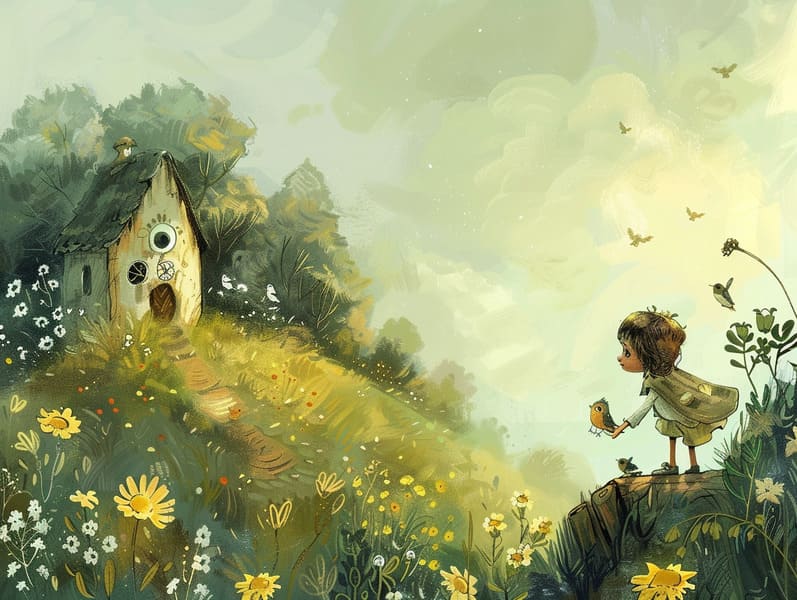The Evolution of Popular Fairy Tales and Their Unending Enchantment.
The Evolution of Popular Fairy Tales and Their Unending Enchantment.
Blog Article

Old fairy tales have long histories. These stories have been passed down from one generation to the next centuries before they were ever put on paper. They were born from a variety of cultures, including Indigenous traditions. They were initially told among grown-ups, often carrying themes and messages concerning the societal norms and beliefs of the time.
The famous Grimm duo, Jacob and Wilhelm, were among the first to collect and release many of these beloved tales. Their volume, "Grimm's Story Collection," included stories like "The Story of Cinderella," "The Story of Hansel and Gretel," and "Schneewittchen," which have since become hallmarks in the world of iconic fairy tales. Similarly, Hans Christian Andersen's imaginative tales, such as "The Little Mermaid," and "The Little Duckling," have enchanted hearts worldwide, guaranteeing their place in the pantheon of treasured fairy tales.
Even though they are old, classic fairy tales remain as important as ever, especially as bedtime stories for kids. These delightful tales are now available in many formats, including beautifully illustrated books, magical animations, and digital fairy tales.
Their lasting appeal can be ascribed to several enchanting factors:
Vital Lessons: Traditional fairy tales often illustrate important moral lessons. Stories like "The Story of the Boy Who Cried Wolf" teach the importance of being truthful, while "The Race of the Tortoise and the Hare" point out the virtues of steadfastness and humility. These narratives offer children clear distinctions between right and wrong, guiding their moral compass in a kind yet lasting way.
Empathy and Understanding: Traditional fairy tales frequently present individuals facing difficulties and adversities, fostering kids to sympathize with their struggles and champion their triumphs. For instance, "The Story of Beauty and the Beast" reveals the significance of seeing beyond looks to see the real person of a individual, developing awareness and awareness.
Cultural Knowledge: Many fairy tales are saturated in the cultural contexts from which they emerged. Learning from these stories can provide informative snapshots into different beliefs, enhancing a sense of world appreciation and respect.
Fantasy and Innovation: The mythical elements in ancient fairy tales—mythical entities—stimulate children’s fantasy worlds. These stories carry readers to magical realms, activating imaginative ideas and a sense of excitement that persists a lifetime.
Ancient fairy tales are not only spellbinding but also didactic. They work as alluring tools in enhancing various thinking and feeling skills in children. When old fairy tales are voiced, they nurture language proficiency by showing new word meanings and elaborate sentence structures. This practice also promotes hearing abilities and attention, as kids remain attentive, looking forward to see what happens next.
Furthermore, analyzing the themes and characters of old fairy tales can strengthen thinking skills and intellectual skills. Children are educated to recognize patterns, predict happenings, and understand cause and effect. These analyses also promote young ones speak out their thoughts and feelings, advancing their emotional intelligence.
In today’s online age, the proliferation of free fairy tales online has made these stories more acquirable than ever. Web-based platforms and software provide huge assortments of ancient fairy tales that can be viewed or heard anytime, anywhere. Fairy tales read aloud are particularly in demand, sharing an fascinating method for the young to immerse in these alluring stories. Read-aloud books and read-to-me stories transport characters and settings to life, often accompanied by entrancing melodies and melodies that heighten the storytelling experience.
The timeless allure of old fairy tales lies in their ability to transform to modern society while maintaining their core values. Contemporary versions of these stories often showcase more diverse figures and modern settings, making them pertinent to today’s audience. However, the main ideas of heroism, goodness, and lawfulness remain unchanged, continuing to appeal to readers of all ages.
Traditional fairy tales also offer a sense of warmth and familiarity. They make available a structured narrative with a plain beginning, middle, and end, often coming to a close with the closure of conflicts and the triumph of virtue over wickedness. This predictability can be relieving for kids, distributing a sense of sturdiness in an dynamic world.
Old get more info fairy tales continue to enthrall and coach new generations, maintaining their enchantment and impact in modern society. As bedtime stories for kids, they bequeath a perfect blend of captivation and insight, cultivating moral values, empathy, and creativity. The accessibility of digital fairy tales and the sought after status of fairy tales recited assure that these classic fairy tales remain acquirable to new generations.
By upholding and imparting these tales, we continue to acknowledge the rich tapestry of fantasy and cultural heritage. Whether you are viewing a beautifully illustrated book, browsing a online library, or playing an read-aloud story, the enchantment of classic fairy tales is always within reach. These narratives reveal of the unchanging force of tales and its ability to bind us across epochs and places.
Even if you are enjoying a colorful picture book, enjoying a internet collection, or listening via an audio story, the allure of ancient fairy tales is always within reach.
These narratives reveal of the immortal presence of fairy tales and its ability to bind us across eras and regions, casting a charm that delights and instructs alike.